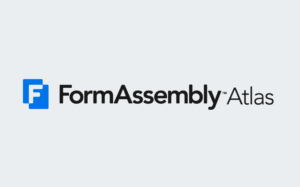FormAssembly and Salesforce recently participated in a webinar presented in partnership with Salesforce AppExchange titled, “Mastering Your Salesforce Data: Tips, Tricks, and Tools to Become a Data Hero.” During the presentation, panelists Rebecca Kinney, Senior Software Engineer at Ascension, and Shelley Hou, Director of Technology at the Office of Accessible Education at Stanford University, discussed what they are doing at their respective organizations to keep data clean and reliable.
This topic is important for anyone who is responsible for managing data for their team or organization at large. You can watch the presentation on-demand or read on for an overview of what Rebecca and Shelley discussed, including how they address the problems of inconsistent and inaccurate data by using FormAssembly.
If you’re looking for more resources to take better control of your data, download our free Salesforce + FormAssembly Hero Toolkit.
The biggest data battles fought within organizations
Rebecca and Shelley shared two major battles that they fight in regards to data within their organizations: data consistency, and data accuracy.
Regarding data consistency, the panelists emphasized the critical importance of ensuring that data entering and leaving a system remains consistent across multiple platforms. This includes maintaining uniform data types. In healthcare, for instance, mismatches often occur due to the use of different systems and unique identifiers. Tools like FormAssembly can help by ensuring that data imported into Salesforce adheres to the correct data types and formats.
Ensuring data accuracy is another big battle. For example, getting people to spell their names correctly on a form or enter an ID number accurately is not a guarantee. Data validation rules and parameters that prevent duplicate data or multiple forms, such as those provided by FormAssembly, make a huge difference in data integrity for organizations like Ascension and Stanford University.
Winning the battle against inaccurate data
Rebecca and Shelley both agreed that FormAssembly’s SAML authentication helps ensure data consistency and accuracy by streamlining the user experience completing online forms. With SAML in place, users aren’t required to re-enter previously collected information. It is automatically populated instead, saving time and reducing the risk of data entry errors. This gives organizations greater confidence in the reliability of their data.
The panelists also stressed the benefit of being able to create and use picklists in their forms instead of open text fields; utilizing picklists further enhances data accuracy by standardizing input. Additionally, using FormAssembly’s Salesforce connector validates data during form submission. In combination with integrity dashboards within Salesforce, data administrators can easily monitor and highlight issues that may exist in the data collection process.
Addressing reliance on manual processes
Rebecca explained that many administrative tasks remain manual unless an organization invests in automation tools. Relying heavily on platforms such Excel and Google Sheets, for example, is inefficient for data management at scale.
Investing in an online forms solution like FormAssembly enables the creation of custom fields that support efficient data imports. This, in turn, makes it easy to run reports, build dashboards, and gain full visibility into data. For example, a higher education institution like Shelley’s is able to track which students will be abroad and require housing quickly and accurately with the help of FormAssembly. What once took four hours of manual lookups, copying, and pasting in Excel can now be completed in 30 minutes, cleanly, efficiently, and with far less effort. For data administrators, that kind of time-saving is invaluable.
Processes, systems, and tools that solve data validation challenges
Healthcare organizations and higher education institutions like Ascension and Stanford rely on FormAssembly to streamline data validation. By using FormAssembly’s conditionals feature, these institutions build dynamic forms with varying degrees of complexity that power automated workflows critical to their operations.
At Stanford, for example, Shelley’s Registration Checkpoint form verifies student identities and directs them to the correct registration forms based on their specific needs. This prevents users from wasting time on irrelevant forms and reduces confusion. It also eases the burden on the administrative teams managing the data.
With FormAssembly, conditionals can be added or updated at any time, allowing for a tailored user experience and flexible backend logic. Best of all, users only interact with the fields and forms that apply to them, making the process more efficient, accurate, and user-friendly for everyone involved.
Final thoughts
Both Shelley and Rebecca emphasized that being a data hero means being your own advocate. Whether you’re part of a large team or operating as a solo administrator, it’s essential to demonstrate to leadership the value of collecting consistent, accurate data and to highlight the tools that make it possible.
The impact of easy-to-use forms goes beyond efficiency; they reduce friction, improve user experience, and create opportunities for meaningful engagement. It’s easy to lose sight of the end user, but tools like FormAssembly help bridge that gap. By enabling streamlined data collection and seamless integration, FormAssembly empowers teams to take control of their data, drive smarter decisions, and truly become data heroes within their organizations.
